Is Teak Wood Expensive? A Look At Its Price Tag!
Teak wood, also known as Burma teak, is one of the most in-demand wood species in the world. It is native to Myanmar but can also be found in other Southeast Asian countries, like Indonesia.
Now, being a hardwood lumber, you might wonder, is teak wood expensive? The answer is yes. Teak wood is generally more expensive than most woods due to its durability, limited supply, and slow growth rate. It is also pricey because it requires little maintenance, and the harvesting process is very labor-intensive.
However, I’ll also share how much teak lumber is compared to other hardwoods, along with other cheaper alternatives to this wood. Read on to find out.
Is Teak Wood Expensive?
Yes. Real teak wood is more expensive than most hardwoods on the market, such as mahogany, cherry, maple, and oak. However, there are many good reasons this wood is pricey. These include:
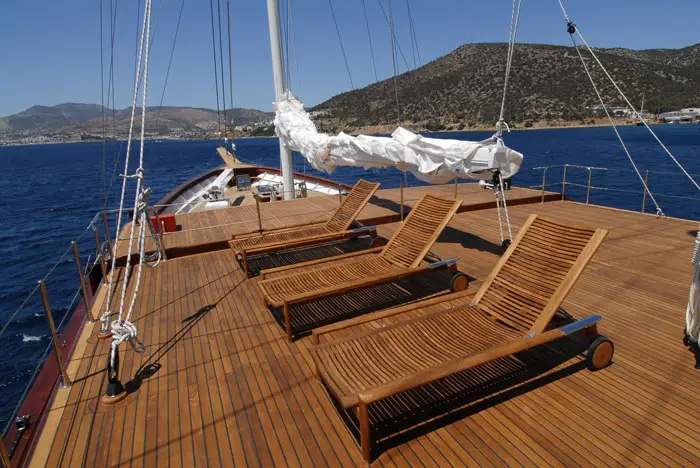
1. Durability
The first reason teak is costly is due to its superior durability. This wood is very hard, with a Janka rating of 1000 lbf to 1155 lbf. Therefore, its resistance to wear and denting is higher than for most woods.
In addition, teak is rich in natural oils and wood resins, making it resistant to insect infestations, water, and rot damage. As such, furniture made from teak can last between 50 and 75 years with proper care.
2. Limited Supply
Before, it was possible to legally export teak logs. However, today, countries like Indonesia have put up strict logging restrictions. Therefore, companies can only import processed teak lumber, which is more expensive.
Also, the restrictions only permit a few trees to be harvested every year, which must be replaced proportionately. Due to this, teak wood is available in limited supply, making it very pricey.
3. Slow Growth Rate
Most hardwood trees like mahogany and maple take 20 to 30 years to reach their full maturity, yet they are still expensive. However, teak wood takes longer, up to 50 years, to fully mature. This explains why it is priced higher than other woods.
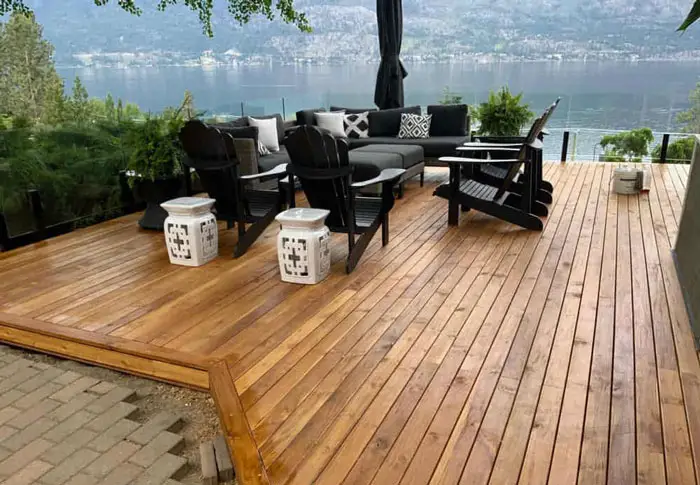
4. Labor-Intensive Harvesting
Harvesting and processing teak wood is a labor-intensive task. This is because the trees are usually felled manually with a chainsaw.
Another thing that makes the harvesting process labor-intensive is the weight of the wood. This means the logs are physically demanding to handle. Also, the milling and drying process is time-consuming.
5. Little Maintenance
Because of its strength and durability, teak wood is low maintenance and does not need to be treated. You can leave your teak furniture outside all year round unprotected, and it will maintain the same integrity.
It only needs occasional cleaning with soap and water to maintain its natural appearance. Because of this, the wood is priced extremely high.
How Much Is Teak Wood Compared To Other Hardwoods?
The prices for teak vary from one supplier to another, as its origin and the grade of the wood. When it comes to plantation teak, it costs between $24.50 and $35.75 per board foot, depending on the thickness.
However, the prices for higher-grade teak, like Fine European Quality (FEQ) range from $33.60 to $69.99.
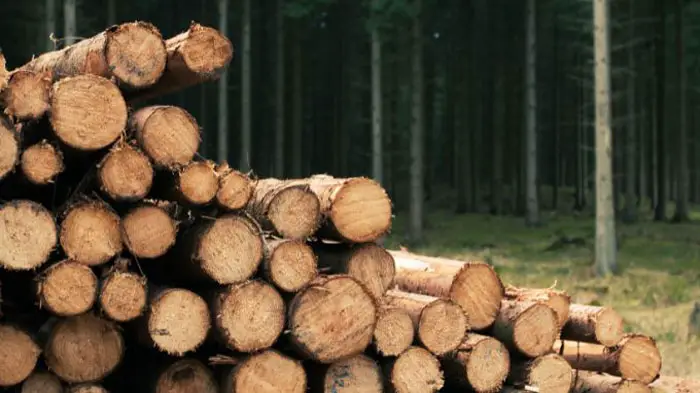
If we compare the prices of teak to other quality and durable hardwoods, the difference is notable. For example, mahogany costs between $8.25 and $30 per board foot, depending on the species and thickness.
Here is a summary table comparing teak prices to other popular hardwoods:
| Type of Wood | Price Range Per Board Foot |
|---|---|
| Teak | $24.50 to $69.99 |
| Mahogany | $8.25 to $30 |
| Hard Maple | $4.95 to $25 |
| Oak | $5.75 to $25 |
| Birch | $2.65 to $8.00 |
| Walnut | $4 to $35 |
Which Teak Wood Is Expensive?
The quality of teak wood varies, causing price differences. Typically, teak is grouped into three quality grades. These include:
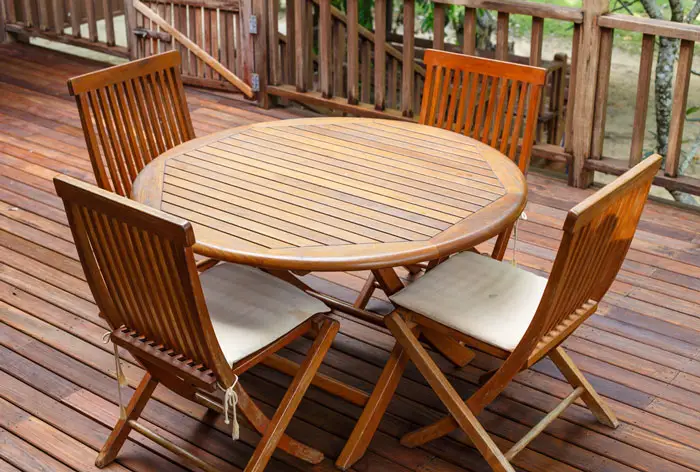
Grade A
This is the highest quality teak and also the most expensive. It is obtained from the heart of the tree, also known as heartwood. Grade A teak is high in natural oils, making it exceptionally durable and suitable for outdoor furniture.
Grade B
Grade B teak is also higher-end but slightly cheaper than Grade A. The wood comes from the exterior heartwood section. As such, it has minimal natural oils, making it less resilient than grade A.
Grade C
Compared to grades A and B, grade C teak is of inferior quality, making it less costly. The wood comes from sapwood or immature trees. Therefore, it is highly prone to damage.
How To Buy Genuine Teak Wood
Unfortunately, with the prices of teak being a bit high and the wood being in high demand, there are many cheap imitations available. Therefore, knowing how to identify and buy real teak wood is essential. Here is how to do it:
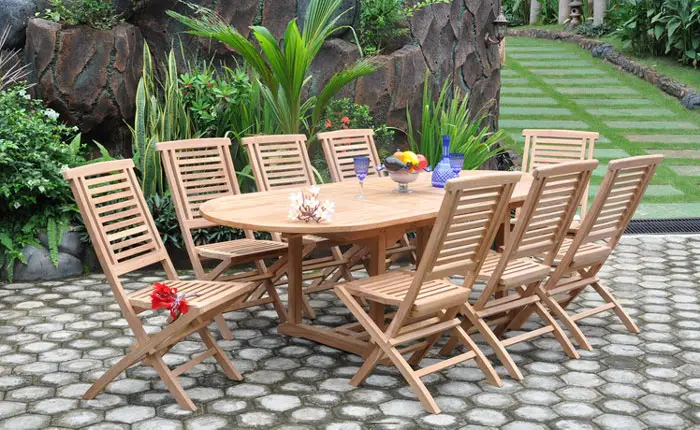
1. Grain Pattern and Color
The grain of genuine teak wood is long and straight. However, it may be wavy or interlocked in some places. In terms of color, Burmese teak has a rich, golden-brown color. And once it weathers, it becomes silver-gray.
2. Scent
Teak wood’s natural oils give it a distinct and strong leather-like smell. The scent is sweet with a pleasant earthy aroma. You should pick up the smell right out of the box.
3. Water-Test
Simply pour a little bit of water on the wood. If it is pure teak, the water droplets will not immediately soak in but sit on its surface.
4. Weight
Genuine teak is very dense and hard, making it heavyweight. So, pick up the wood, and if it feels porous and light in your hands, it is probably not pure teak.
Any Affordable Teak Wood Alternatives?
If you are on a budget and looking for wood that comes close to teak, there are several options available. These include:
Greenheart Wood
This is the next best choice since it is equally tough and long-lasting as teak. Even better, it is not as expensive as teak since it costs about $15 per board foot.
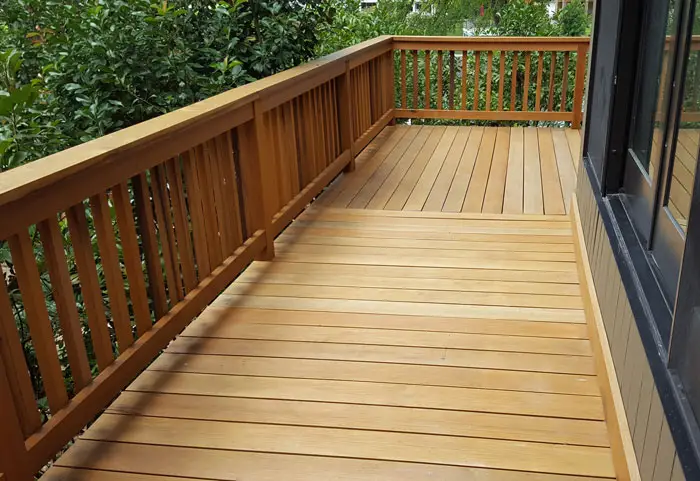
Thermally Modified Timber
Another tough wood you can use in place of teak is thermally modified timber, which is widely available. It costs between $5 and $7 per board foot.
Iroko
Iroko is commonly found in West Africa and also goes by the name African teak. It is very robust and resistant to damage, just like teak. Regarding pricing, it costs between $9.75 and $27.20 per board foot.
Shorea
Shorea also shares many similarities with teak wood, such as being hard, dense, and having a tight grain structure. This makes it an excellent alternative. It is also readily available and cheaper than teak, at $2 to $8 per board foot.
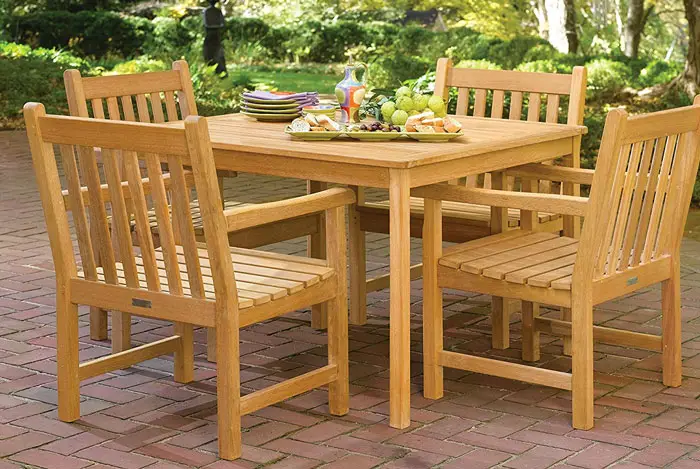
FAQs
In this section, we will respond to commonly asked queries about how expensive teak wood is.
Q. Is teak wood worth the price?
Yes. While it might appear expensive on the face of it, it is not when you consider the value it offers. Unlike some inexpensive wood types, teak is a one-off purchase.
Q. Why is Burmese teak more expensive than its plantation-grown counterpart?
It’s because planted teak is grown more quickly and harvested faster than its Burmese counterpart. As such, the logs from the planted teak are smaller in size and of relatively lower quality.
Q. Are there affordable teak wood items?
Unfortunately, no. However, you could consider buying refurbished or secondhand products. Alternatively, you could get items made from grade C teak.
Outro
Teak wood might be expensive compared to most high-quality hardwoods today. However, it is worth every penny, considering its durability level. This is especially true if you get genuine grade A or Fine European Quality teak.
However, because of the scarcity of this wood, knowing how to identify pure teak is essential. This is because of the many fakes available. And if you cannot afford teak wood, you can always consider affordable but durable alternatives like Greenheart wood.




